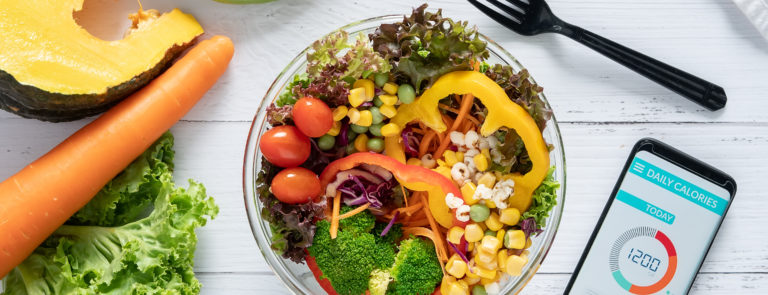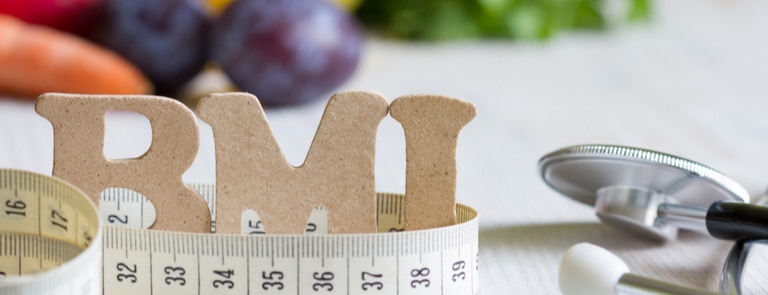15% off €25
All about counting calories

Calories smalories, we all consume them and some of us are more conscious of them than others, but how do you actually go about counting them?
Have you had a go, but aren’t sure if you’re doing it right? Or maybe you’re just not sure where to start with the whole calories per day counting thing?
Either way, this article’s here to set the record straight about counting calories, providing you with practical, easy-to-follow advice that’s designed to put any queries you may have had about calories to bed, once and for all!
What are calories?
They’re the amount of energy that’s in the food and drink, the snacks, the main meals and everything in between, that we consume. So the porridge you ate for breakfast or the bagel you had for lunch, the take-out coffee you treated yourself to yesterday morning, they all contain calories.1
Calories are typically measured in something called kcals, which is short for kilocalories, and also in kJ, which is short for kilojoules.2
A kilocalorie is another word for what's commonly called a calorie, so 1,000 calories is written like this - 1,000kcals.
Kilojoules are the metric measurement of calories. To find the energy content in kilojoules, multiply the calorie figure by 4.2.
How many calories should I eat a day?
It depends on if you’re male or female. According to the NHS, the average man needs around 2,500kcal (10,500kJ) a day to maintain a healthy body weight. While the average woman needs to consume around 2,000kcal (8,400kJ) a day.3
However, these calories per day guidance figures aren’t the same for everybody right across the board. They can differ, depending on how old people are, how tall they are, their stature, how active they are, as well as many other things.
And if you want to work out if you’re a healthy weight or not, the NHS recommends you use something called your Body Mass Index (BMI).
BMI calculations apply to everybody and can be used to fathom out where your weight sits on the healthy/unhealthy scale.
How to calculate your BMI
Body Mass Index (BM) is a useful benchmark for bodyweight and health. But how can you calculate your BMI at home?


How to count calories
Counting daily calories sounds as though it should be a bit of a minefield, but in reality, it’s a relatively straightforward thing to do. Once you know what to look for and have got into the swing of doing it…
Generally speaking, counting calories involves checking the labels on your food and drink, the ones that tell you how many grams of energy, carbs, sugar, etc there are, of everything you consume.
This information will set out how many calories are in the 100g or 100ml of food or drink you’re consuming/have consumed. Lots of labels will also say how many calories there are per portion of food, e.g. per packet of crisps, or a Scotch Egg, a latte coffee or a glass of fresh orange juice.
How to calculate calories
You know how we mentioned about counting calories potentially being a bit of a minefield, especially if you’re new to it? Well, this isn’t actually the case because, in addition to food labels, there are also sorts of useful tools you can use and follow to help you count your daily calories.
They include online calorie counters and apps, the vast majority of which are free to download and use. Here are five examples:
- My Fitness Pal
- Lose It!
- FatSecret
- Cron-o-meter
- SparkPeople
There’s also the NHS’ dedicated Calorie Checker calculator, which contains the calorie details of more than 150,000 different food and drink items. Simply type in the full details of the food and drink product you want to calculate the calories for, and hit ‘search.’
(Also, don’t forget, most restaurants these days include calorie information on their menus, so you can continue to check your daily calories, even if you’ve decided to eat out.)
Going back to the Calorie Checker calculator, depending on how much information you’ve provided, you’ll either get the result or be asked to choose the specific product. For example: A 100g plain, baked potato with the skin on contains 97kcal.
However, if you feel that you want more of a tailored approach to your calorie consumption, then it’s best to go down the BMI route. (This article, ‘How to calculate your BMI’ should be able to help you work out yours).
5 tips for counting calories
To get good at counting calories you’ve got to a) remember to count your daily calories and b) have a clear system in place for how you’re going to do it.
Being organised and planning ahead with calorie counting is most certainly the most effective way to make it happen.4
- Do – work out how you are going to monitor your calories before you do anything else. Are you going to use an app? Tot them up with a pen and paper manually as you go along? Or are you going to do it another way? Whatever you decide, it needs to work for you and you ideally need to stick to it (although it’s perfectly ok to tweak existing systems to make them work for you too!)
- Don’t – get caught out by having calorific food and drinks in the house. Where possible, try to stock up with lots of healthier snacks and meals that will hopefully keep you within your daily calorie allowance. And if you fancy a snack, that’s fine, because it won’t be a calorific one!
- Do – use a meal plan to calculate your calories every single day and be clear on how many kcal you’re consuming on a daily basis. This is particularly useful if you’re planning to cook all or some of your meals from scratch.
- Don’t – forget to check the portion size on packages and don’t overlook the importance of paying close attention to all of the useful information that’s on the back of food and drink products.
- Do – gradually cut your calories, if you’re wanting to lose some weight. Suddenly cutting how many daily calories you’re consuming may mean you possibly lose weight quicker however, it’s not the healthiest way to go about it.
How fast can you lose weight counting calories?
Not everybody will lose the same amount of weight by cutting calories because, as we stated at the start, everybody’s body, metabolism and make-up is different. (For more insight on metabolism read this, ‘The 8 best foods for boosting metabolism.’)
Generally speaking, if you consume more calories than you happen to be burning off, then you will potentially put weight on. And if you eat less calories, but more burn more by exercising, then you’ll most probably lose weight.5
3,500 calories is the equivalent to around 1 pound (0.45 kilogram) of fat. This means you need to burn an estimated 3,500 calories to lose 1 pound. It’s believed that if you cut around 500 to 1,000 calories a day from your diet, you could lose around 1 to 2 pounds a week.
How does the body burn calories?
It’s mainly down to your metabolism. Your metabolism is essentially all of the chemical processes that happen inside your body to keep you alive and your organs functioning normally, such as breathing, repairing cells and digesting food.
However, some people naturally have faster metabolisms than others. Muscle cells require more energy to maintain than fat cells, so people with more muscle than fat tend to have a quicker metabolism.
Interestingly, men tend to have a faster metabolism because they have more muscle mass, heavier bones and less body fat than women.
Also, if you’re planning on suddenly cutting back on calories to save some pounds, you may want to think again. Crash dieting and other calorie-restricted diets can slow down people’s metabolism.
This is due to the fact your body has to break down muscle and use it for energy. And the less muscle mass you have, the slower your metabolism’s going to be. What’s more, if you have less muscle and a slow metabolism, than it’s easier for you to put weight back on again after you stop dieting.
The best way to burn calories, as recommended by the NHS are by6:
- Taking part in aerobic exercise – e.g. at least 150 minutes of walking, swimming, cycling a week.
- Doing some strength training - muscle burns more calories than fat, so increasing your muscle mass will help you lose weight. The most effective strength training targets all of the major muscle groups and should be carried out two or more days a week.
- Staying generally active – taking the stairs rather the lift, walking to work or walking the kids to school, using your bike instead of the car, the more active you are, the better.
Did you find this article useful? Now that you’re here, you may also want to check this out too, ’10 foods high in calories – and 10 low calorie alternatives.’)
Last updated: 14 April 2021
- https://www.nhs.uk/live-well/healthy-weight/understanding-calories/
- https://www.nhs.uk/live-well/healthy-weight/understanding-calories/
- https://www.nhs.uk/live-well/healthy-weight/understanding-calories/
- https://www.healthline.com/nutrition/counting-calories-101
- https://www.mayoclinic.org/healthy-lifestyle/weight-loss/in-depth/calories/art-20048065/
- https://www.nhs.uk/live-well/healthy-weight/metabolism-and-weight-loss/



